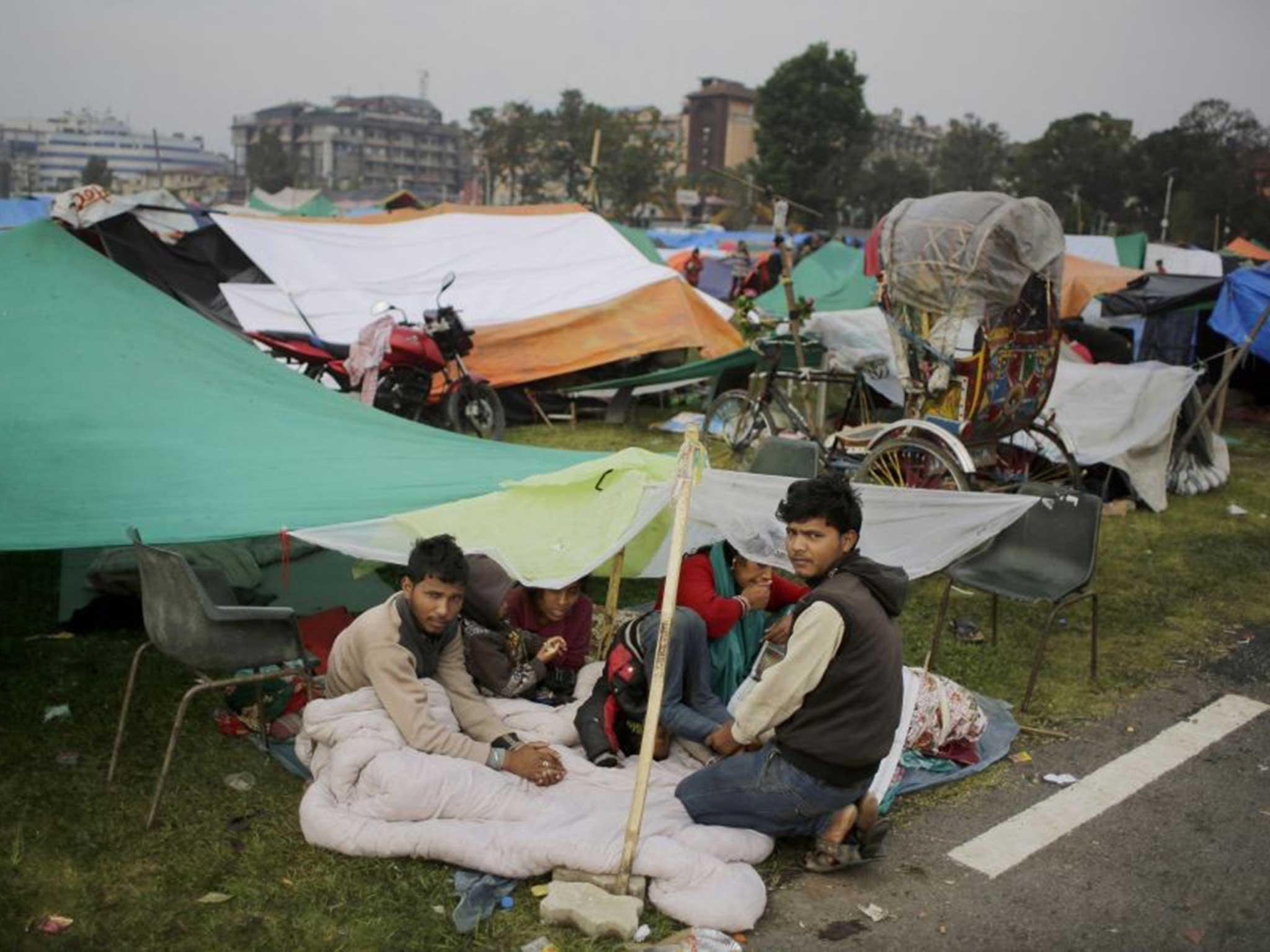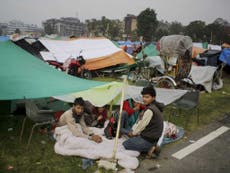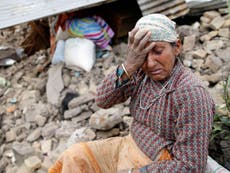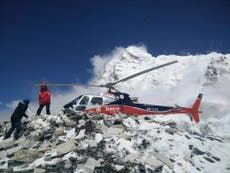Nepal earthquake: Mobs of looters roam camps and the smell of burning flesh fills the air, but still there is hope
Fear has gripped us all, but people are helping in any way they can

Three days after the 7.8 scale quake that hit Nepal, tremors continue to shake the ground beneath our feet at all times of the day and night. We are told that the worst is likely over, according to seismologists, and that aftershocks are ‘good’ signs, but having faith in such explanations is not easy.
People are now terrified – to go to the toilet, to enter their homes, to move at all from the open spaces all over the city where they are seeking shelter. Most of them are not seeking shelter outdoors because homes have been reduced to rubble, people in Kathmandu Valley are camping outside of their homes in fear of another big quake.
By and large, it was the older mud-brick and stone structures which went down in the quake. But many of the cement pillar and beam houses, spread haphazardly across the city, have also been damaged, badly in many cases. There are cracks on the walls inside and outside of houses, and chunks of cement have fallen off ceilings and walls. This has given people reason to believe that their homes are not safe, and even a quick run into their toilet or kitchen is made in haste and in utter fear. People are wondering how when all this subsides they will ever be able to go back to sleeping in their beds, on the second and third floors of these unsafe structures.
Although fear has gripped us all, people are nonetheless volunteering and helping in any way they can, and working hard to maintain a semblance of normalcy. Most people are not alone. Neighbourhoods have come together and everyone is giving what they can, from foodstuffs to blankets and pillows.
At night people sleep in rows and huddle when the tremors come, children are sung to, and the elderly are looked after. In the afternoon, people play cards under the tents, drink tea and crack jokes about the ‘nightmare’ that won’t end.
But the death toll is rising, upwards of 4000, and the sense of loss is deepening. In Chabahil, where I have been staying with some 20-something neighbours and family on the lawn of a former Minister’s house, we can see the smoke rising from Pashupatinath’s open cremation bank, the Aryaghat. Last night, it got so intense that we could smell the burning flesh of the deceased — a grim reminder of the tragedy of it all. One can only imagine what is must be like in the far-flung areas which were worst hit and where rescue operations have only just begun.
In the Kapan area of Kathmandu, not far from Chabahil where I am, mobs of looters have been going from camp to camp spreading false rumours about another big quake, creating more panic among the residents there, who are already traumatized after a seven-storey building collapsed and killed 80 people nearby. The situation is similar in Patan, we hear, where looters are ravaging what remains of the old historical Durbar Square area, a UNESCO World Heritage Site. Thankfully people have been quick, on social media and within communities, to ward off these rumours and share positive messages about the decreasing strength of aftershocks and ‘normal’ tremors.
Slowly, stories of survival are also surfacing. Just today, a major Nepali-language paper ran the story of Sunita Sitaula, who was pulled out of a five-story building which collapsed on Saturday in Kathmandu, after a staggering 34 hours. The Indian Army’s rescue mission managed to get her out of the rubble, after locals tried and failed. Similarly, miraculous stories of how mothers and their babies survived the quake are also trickling in, now living under tents with babies as young as a couple days-old.
At Teaching Hospital, a large state hospital in Kathmandu, young volunteers have brought efficiency to what would have otherwise undoubtedly been utter chaos. To my surprise, I saw that all people were masked, the water is purified, donation boxes are everywhere and food and tents are in plentiful supply. Those pulled out of the rubble are undergoing treatment.
But here too, the sense of loss lingers, as the Army and Police trucks arrive with piles of people on board, most to be declared dead, photographed and cremated. Volunteers say that there is no such management anywhere else, and are preparing to spread their services to other hospitals in the valley and prepare teams to go out to rural areas, in Gorkha and Sindhupalchowk, where the casualties are said to be highest. The volunteers, led by a youth focused political organization, Bibeksheel Nepali, are doing a tremendous job and can be supported here.
In the midst of this, there is also a deep feeling of despair as people wake up to the fact that their cityscape has changed forever. So many temples, houses and monuments which have defined our lives, home and culture, are gone—piles of rubble. All that is left standing is, well, ugly.
The sounds of helicopters, planes and crows and barking dogs drown out everything else. Many people believe the birds and dogs can sense tremors and are alert to their sounds. Relief efforts seem mostly to be happening at the community level, although rescue operations with help from the South Asian region are already ongoing we hear. Considering the Nepal Army only has one big chopper, it is without doubt that Nepal cannot address this tragedy alone. In Kathmandu Valley, it is apparent that unless people can be persuaded to go back to their homes, disease and illness will rapidly spread. But it is questionable whether that too is a safe option.
The state’s presence in all this is low, and people are angry - saying that a Cabinet meeting was held among Indian ministers in Delhi regarding Nepal’s situation and how to help just a few hours after the quake, while there was no word from our own government. There has been no address from Nepal’s Prime Minister Sushil Koirala as yet, while Indian PM Narendra Modi’s tweets in the last few days have all been about Nepal. Even the UK’s Queen has released a statement along with messages from leaders all over the world, and yet there is an eerie silence from the Nepalese government. Perhaps they are busy counting the dead. There have been a few press meets with the Chief Secretary, but people are just not assured.
Sadly, the widespread understanding is that if Nepal is going to recover from this mess, we will need to depend on leadership from abroad and the Nepali diaspora, who have been going all out to support relief efforts and boost the Nepalese morale. And despite this tragedy, morale is high, and ideas on how to rebuild what has been lost are already surfacing. People are talking finally about building codes and sustainable living. What a wake up call it has been for us all.




Join our commenting forum
Join thought-provoking conversations, follow other Independent readers and see their replies